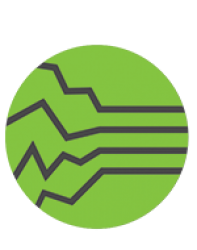At Nike, I brought the process of collecting data from an eight-hour process to an automated, weekend-run process that required only seconds to review on Monday morning. Instead of showing up on Monday and running Teradata queries during peak time, I sent a driver (in the form of an Alteryx Daemon) to pick up the data on Sunday nights while all were asleep. The driver then emailed me a note, letting me know if he was successful on his routes, collecting the data from the nine realms he needed to visit that night. If he was not, he sent me a copy of his diary, tried a second time from where he failed, and then send me a second copy of his diary. Every Monday I was able to read his diary, retrace his steps, and in the rare times he was unsuccessful, finish his tasks.
Using Tableau, I gave the monthly story of the health of our inventories and our process. I presented this story to our internal staff (three with a doctorate, of course, as you have in any lab) as well as to our stakeholders, who were also the stewards of the realms of our data. This process prevented stock-outs for over 3000 products in three geographies.
Safety Stock is a critical tool for Nike’s on-demand business line. Is it something you need to investigate further?
Data Quality: Since 2021, I have been serving as an independent consultant for Nike’s Consumer Creation division, governing the entire portfolio’s data quality. My role is to automate data quality audits using Alteryx and to provide data modeling resources. Transitioning from one data set to another, updating databases, and updating architecture require the most modern and best data modeling techniques; my role is to provide that feedback and modeling so that the data is as clean, functional, and intuitive as possible. It’s not 1999, we don’t need fieldnames like X_COV_GLT any longer. And TRUE and FALSE fields should be booleans, not text. These are the sorts of things I’m helping shape Nike’s data future.

